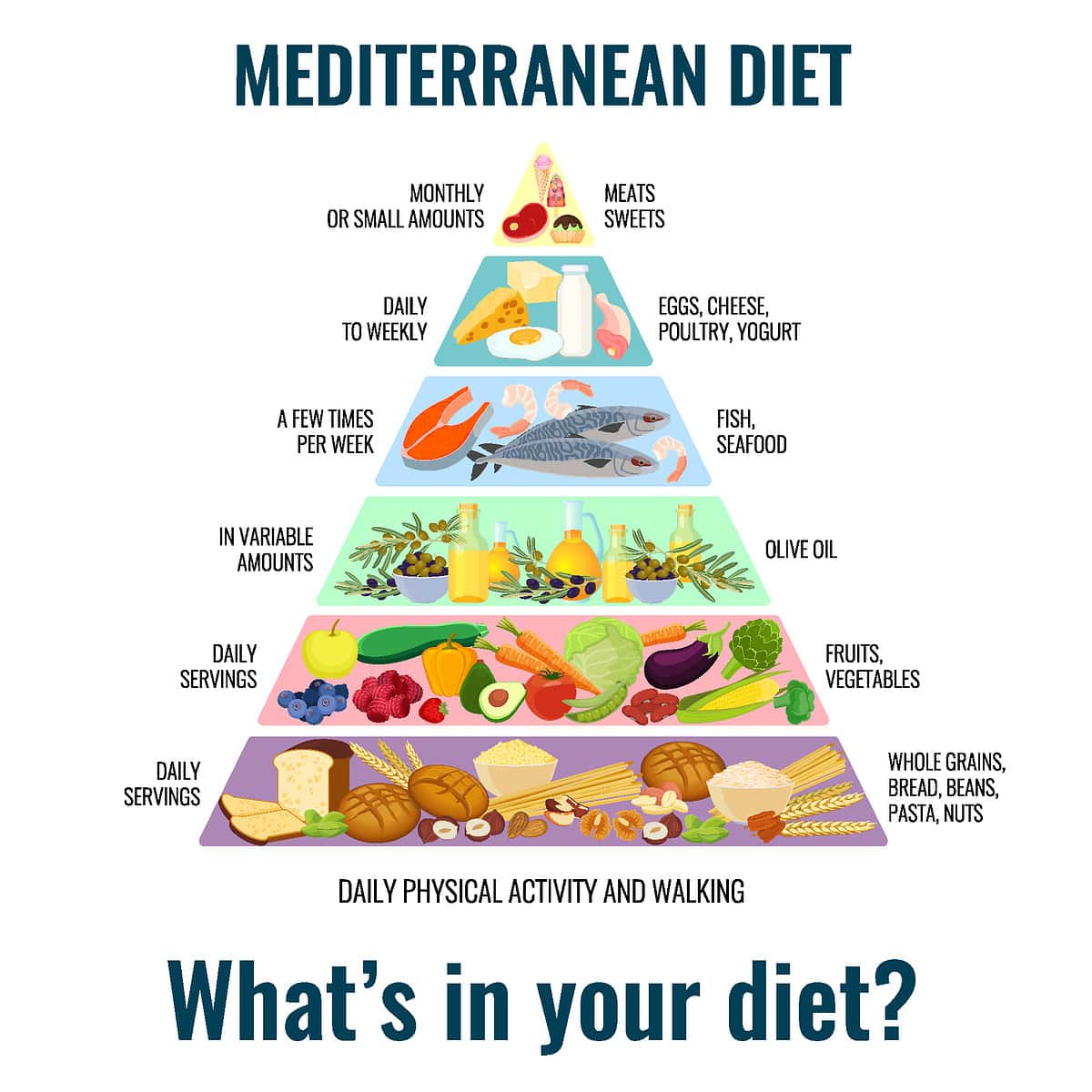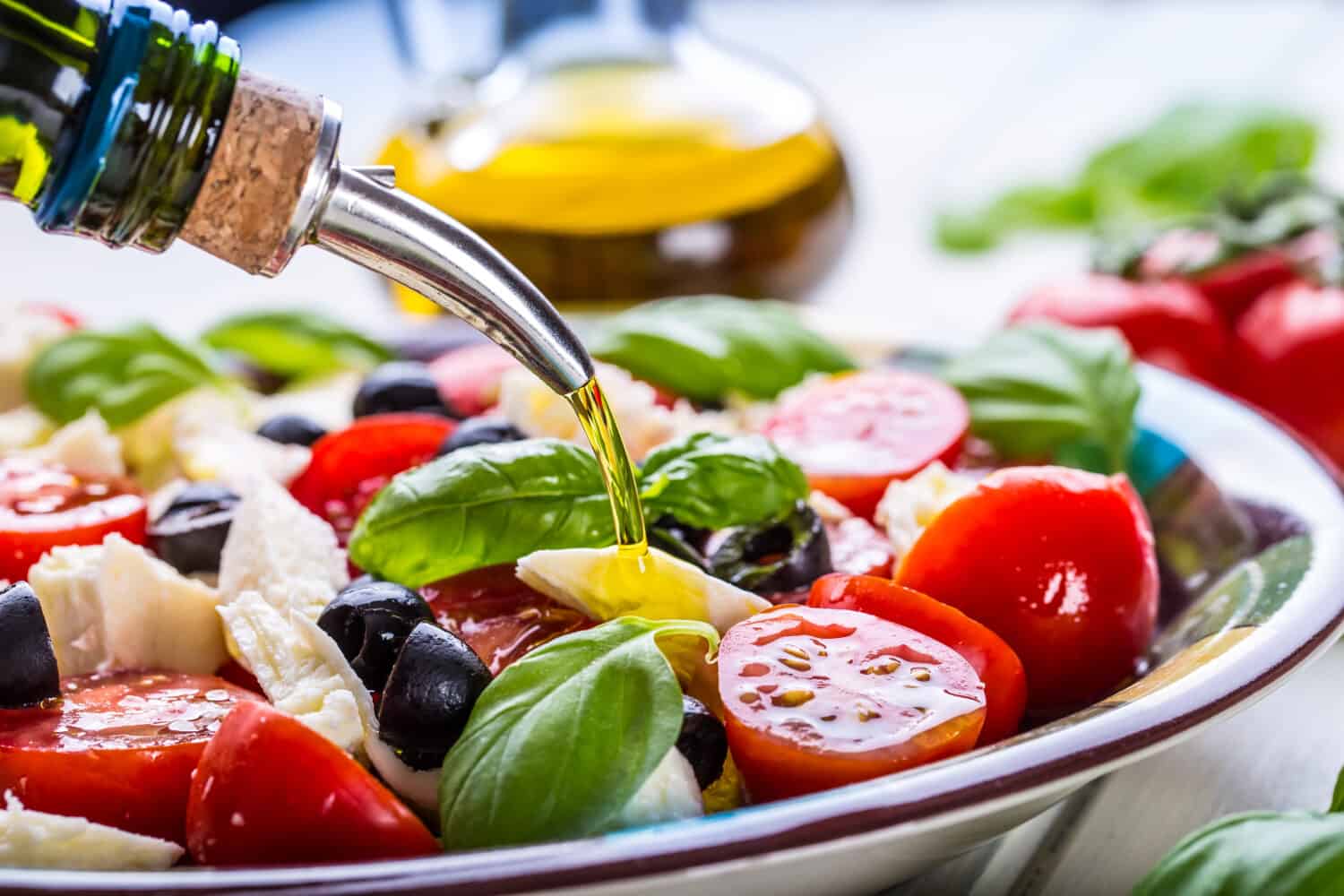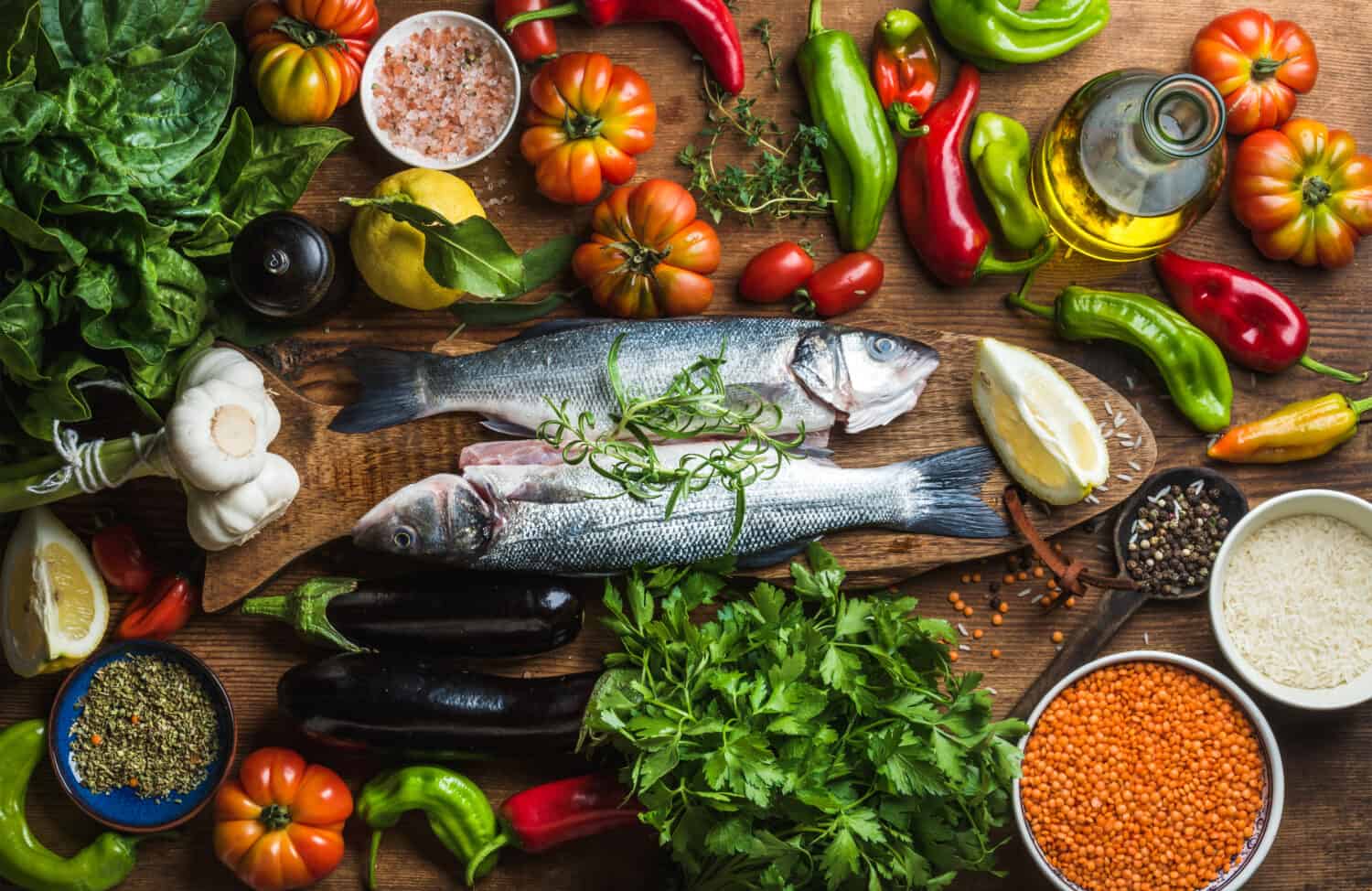Ever heard of the Mediterranean diet? This diet emphasizes the consumption of plant-based foods and whole grains alongside healthy fats. And you’re in luck because this Mediterranean diet chart makes eating well so easy. The Mediterranean diet has stayed the course in popularity, and health benefits, specifically in terms of its links to cardiovascular wellness. It's currently ranked as the number 1 diet for eating healthy by the U.S News & World Report rankings. Also, a recent study found that this diet may deliver the same health benefits as a 2-mile stroll or 4,000 extra steps per day (via EatingWell.com).

©Leka Leck/Shutterstock.com
In this post, we'll discuss the tiers of this chart and exactly how these foods impact your health. Learn more about the diet as a whole, as well as the risks of doing it incorrectly. We'll discuss the history of the Mediterranean diet, and how it's evolved to be even more heart-healthy. Read on to get some recipe ideas, and learn more about the foods you can choose from. There's a reason this diet is popular, so here's your thorough breakdown of all things involving the Mediterranean diet.
Who Started The Mediterranean Diet?
The Mediterranean diet was inspired by Mediterranean cuisine, and its balance between whole grains, fresh fruits, proteins, and healthy fats. In ancient Greek and Roman cultures, their diet was centered around agricultural products like homegrown vegetables and fruits, hand-made cheeses, raw milk, and freshly caught meat or seafood. The diet itself is attributed to scientist Ancel Keys, who, during his time at the University of Minnesota, studied the correlation between dietary choices and heart disease.
Poor populations in Southern Italy had lower rates of heart disease than the wealthy people of New York, and this was very much linked to the way in which they ate. In his well-known study called the “Seven Countries Study,” Keys traveled to Holland, Finland, the U.S., Japan, Greece, and Yugoslavia to gather data. From this, he extrapolated the dietary staples that contribute to healthier lifestyles in certain regions. The main groups came down to bread, pasta, veggies, moderation in meat, and the use of olive oil over other kinds of fats (via NCBI). Keys and his wife Margaret, went on to coin the name “the Mediterranean diet,” and first mentioned it in their book “How to Eat Well and Stay Well the Mediterranean Way,” in 1960 (via Science Direct). And here we are today, with the diet still going.
The Mediterranean Diet: In Summary
As you can see from the handy chart above, daily servings include high vitamin and mineral content foods including whole grains, bread, beans, pasta, and nuts. The tier slightly above this can also be consumed daily, ideally once with each meal. This section features an emphasis on fresh fruits and vegetables. Olive oil is the main oil in this diet, to be used in “variable amounts,” instead of vegetable or animal fat, and especially instead of butter.

©Rimma Bondarenko/Shutterstock.com
A few times a week this diet includes fish and seafood for protein, and items like eggs, cheese, poultry, and yogurt can be incorporated daily or weekly. This diet places poultry as a priority above red, hearty meats, and sweets. As you can see these ones are the last on the tier, to be eaten in very small amounts or as little as monthly. So let's get into the details about each of these tiers.
The Mediterranean Diet Chart Explained
Tier 1
Starting from the bottom, which includes daily foods, we have whole grains, bread, beans, pasta, and nuts. Whole grains are sources of dietary fiber which can improve your cholesterol levels and reduce your risk for heart disease, and other chronic illnesses (via American Heart Association).
Tier 2
The second tier includes fresh fruits and vegetables, which are also consumed daily as a part of this diet. You can't go wrong with the vitamins and minerals contained in citrus fruit. Or grab an apple if oranges aren't your thing!
Tier 3
This third tier emphasizes olive oil, which is the only healthy fat added to this diet. Olive oil can be used in moderation for cooking, baking, and garnishing. It is anti-inflammatory in nature and there are quite a few studies on the health benefits of the extra virgin benefits. According to Harvard Medical, frequent olive oil use can decrease a person's risk for cardiovascular risks, some cancers, and even dementia.

©Marian Weyo/Shutterstock.com
Tier 4
Next up is fish and seafood which are a staple of this diet at least a few times a week. These provide a good source of protein and healthy fats. Also, the omega-3 fatty acids contained in fish and seafood can reduce the risk of cardiovascular diseases as well as the chance of a stroke.
Tier 5
Here we have eggs, cheese, poultry, and yogurt, all great low-fat protein options.

©Goskova Tatiana/Shutterstock.com
Tier 6
And lastly, the tier in most moderation, we have red meats and tasty sweets. This is not to say they can never be consumed if you're doing the Mediterranean diet, but only in very small amounts or once a month if so. Recent findings actually show that red meat isn't necessarily bad for your heart, but that it should still be eaten in moderation (via Mayo Clinic). An excess of these in your diet may contribute to a risk of heart disease because of the high levels of saturated fat, and high cholesterol associated with red meat. As for sweets, a lot of sugar can raise your blood pressure, so it's great if you can get your sugar from plant-based sources instead (via Harvard.edu).
Recipe Ideas
This great meal breakdown from Eatingwell.com features lots of recipe ideas that follow the tiers of the Mediterranean diet. The shopping list to try these recipes includes the following:
- Olive oil
- Fish (canned, fresh, or frozen)
- Beans/lentils
- Fruits and vegetables (fresh and frozen)
- Whole grain options (oatmeal, quinoa, brown rice, whole-wheat pasta)
- Nuts, seeds, nut butter (peanut, almond, cashew, etc.)
- Eggs
- Kefir and nonfat plain Greek yogurt
Now check out some of these great recipe options:
- Cinnamon Roll Overnight Oats
- Vegan Superfood Grain Bowls
- Veggie & Hummus Sandwich
- Sheet-Pan Roasted Salmon & Vegetables
- Vegetarian Spring Egg Casserole
- White Bean & Veggie Salad
- Summer Shrimp Salad
- Everything Bagel Avocado Toast
- Stuffed Sweet Potato with Hummus Dressing
- Guacamole Chopped Salad
- Strawberry Poppy Seed Salad with Chicken
Good Things To Know
In summary, the Mediterranean diet is unique in that it's not very restrictive, and it's pretty proven to have links to improved cardiovascular health. Other benefits include healthy weight loss, lowering blood pressure, cholesterol levels, and blood sugar content. It can decrease your risk for metabolic issues, as well as certain types of cancer. And, it supports a healthy gut and promotes brain health, even in older people. This diet is recommended by cardiologists for its health benefits, which is not something that's true of all the many diets and restrictive fads out there (via Cleveland Clinic).
However, as with any diet, it's still good to know the risks. While the featured Mediterranean diet chart makes eating well so easy, there are some caveats to how unrestrictive this diet can be. According to UPenn Medicine, the biggest setbacks one can face while partaking in the Mediterranean diet include weight gain, low iron levels, and calcium deficiency. Weight gain may be attributed to the added healthy fats in olive oil and nuts. That is why this diet requires moderation on the part of the dieter. Because meat is less of an emphasis in this diet, it's important to find iron sources from other ingredients. For instance, check out some of these iron-rich food options. The same goes for calcium because it's not just in dairy products. Find calcium in fish, seeds, beans, and leafy greens!
The image featured at the top of this post is ©Foxys Forest Manufacture/Shutterstock.com.

